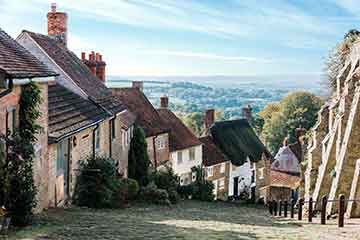Ground heave. How to prevent it and Solutions.
Heave is a phenomena that occurs when the soil beneath a structure expands and pushes the ground upward, which can harm a building’s structural integrity. Subsidence, in which the ground sinks, is the reverse of ground heave. This article provides all the information you require regarding heave.
Ground heave could be a problem if your house was constructed on clay soil. The movement of the ground upward, known as ground heave, is typically attributed to the swelling of clay soils, which expand when moist. The exposed upper surface of the ground increases as a result.
Heave has the opposite effect of settlement, which is brought on by the weight of the building, and subsidence, where the earth is unstable and sinks downward.
Even a small amount of what surveyors refer to as “ground displacement”—less than 150mm — can cause major structural damage to the walls and foundations. When a tree (or trees) that were previously absorbing a lot of water is removed, this can occur in certain types of soil.
Heave can also appear in soils that are susceptible to freezing, leaky drains, and/or water sources. A single tree has the capacity to absorb up to 150 litres of water every day. The degree of ground movement after the trees are removed will depend on several factors, including the maturity, size, and kind of the tree, the water table, how absorbent the clay soil is.
The removal of mature trees is the most frequent source for ground heave. The soil retains more water and expands when wet because the dying roots are unable to extract water from the ground.
An investigation of the soil’s consistency or a tree survey (to locate any existing trees’ root protection zones) can stop the issue from arising in the first place.
A change in the water tables, the removal of soil during excavation, or damaged drains are some additional causes of ground heave. Ground heave can also be brought on by nearby building projects that can affect the ground drainage; also extreme weather (heavy rains over a long period of time) or water that has been trapped in the soil can freeze and expand resulting in ground heave.
Need A Free Estimate?
- Fully qualified RICS professional surveyor
- Affordable, fast and thorough surveys
- Clear, precise and easy to understand report
- Cracking to brickwork and windows: this cracking is more likely to be vertical, whereas subsidence cracking is more likely to be diagonal.
- Doors sticking as their frames become out of square
- Lifting of paths and patios surrounding buildings
Once you’ve selected your surveyor, they’ll probably conduct some research to ascertain whether you have ground heave. Visual inspections, historical research, and the drilling of trial or boreholes may be used to identify the type of soil and gauge its plasticity, or the potential shrinkability of the earth.
If you’re worried that cracks may suggest ground heave, subsidence, or settlement give your local authority building control department a call to find out how they can help or look for an independent surveyor advice.
Foundations can be difficult enough to get right without the added problem of nearby or pre-existing trees.
The information you need to know while building near trees has already been covered, so our current discussion will concentrate on how to lessen the impacts of heave once a tree has been cut down.
When a tree is cut down, the roots can no longer take water from the earth, which causes the soil to swell when it rains. The swelling has the potential to cause the earth to raise, sometimes by an amount higher than when the property was first built, which could require the foundations to be moved as a result of displacement.
What affects the amount of heave following tree removal?
- Maturity of the tree
- Permeability of the soil
- Availability of free water
It is difficult to say exactly how long it will take for the ground to recover. It can take as little as a few winter months up to as many as decades. In other words, the more water it has absorbed, and thus the more movement that will occur when the water finds a new place to go.
Cellular structures can be erected beneath foundations and floor slabs in areas where heave is expected to be an issue in order to lessen the upward force that heave transmits to the structure above.
Ground heave damage repair can be a time-consuming and expensive process. Heave that is caused by an underlying issue may be fixed with corrective measures like fixing leaky drains or trimming back vegetation.
In some cases, the structures may need to be underpinned in areas where the earth is prone to heaving. To create a new foundation beneath an existing one that extends down to subsoils that are less prone to heaving, excavated soil from beneath existing foundations is replaced with material, typically concrete, in a succession of phases.
It could be required to leave a cavity beneath the building to allow for potential soil movement in the higher layers.
Written by Danil P.
7th Jul 2022 (Last updated on 15th Aug 2022)
5 minute read





